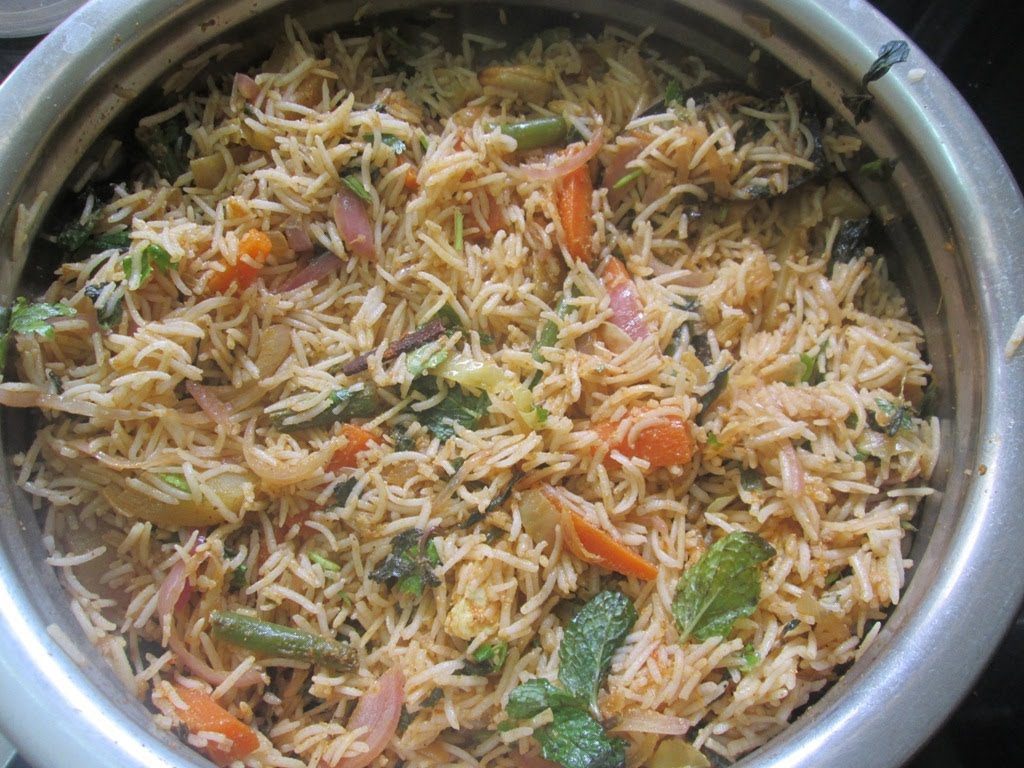Veg biriyani is undoubtedly one of the most favourite dishes among the majority of India’s vegetarian population. It is the perfect medley of spices, rice and vegetables. Knowing how to make the perfect veg biriyani is something most people aspire to as well; the most perfect preparation is one that has both sweet fragrance and a great aroma. It’s quite an easy task if you look at the available recipes, especially since you can read the veg biryani recipe in Marathi, Tamil, English or Hindi as per your preference.
What is Biriyani?
Biriyani, the word itself, means ‘fried before cooking’. While it is very popular in the Indian subcontinent, it is believed to have originated in Persia. Generally, biriyani is cooked either following the Hyderabadi style, known for its liberal use of spices, or as the Lucknow style which is more famous for the subtle flavours. A great biriyani is characterised by the rice grains not sticking together and a very savory taste.
The veg biriyani in particular uses a lot of spices. The preparation has a lot of vegetables which also makes it a very healthy dish. The spices used includes Elaichi (Cardamom), Javitri (Mace), Pepper, Laung (Cloves), , Dalchini (Cinnamon), Coriander, Jaiphal (Nutmeg), Tej Patta (Bay Leaves), and Saffron (Kesar).
The prepared veg biriyani is generally served with a Raita (varieties are possible like onion tomato raita, boondi raita and mint raita). The side dishes with the biriyani may also include pickles, sliced onions or papads. All in all, it is a complete and delicious meal that makes people from all regions and age groups happy and satisfied.
Is Veg Biriyani another name for Veg Pulao?
There has been a lot of discussion around the topic of whether veg biriyanis actually exist at all. People were very confused over whether it was merely another name for veg pulao. However, the preparations of a veg biriyani and veg pulao are extremely different which puts the argument to rest. Veg Biriyani is definitely different from veg pulao.
The main difference comes from the way they are cooked. In the veg biriyani, the vegetables/masala and rice are cooked separately and then stacked in layers before being cooked further on a low flame unlike the veg pulao where rice and vegetables are just sautéed together. Moreover, in the preparation of the veg biriyani, care is taken to ensure that no starch is present and therefore, the water used to cook the rice in is completely drained before fully cooking the rice. The veg pulao works on an absorption method where the rice absorbs all the water it is cooked in.
The veg biriyani and veg pulao is also markedly different in terms of their extravagance, with the veg pulao being a very humble counterpart to the biriyani which is full of spices and has a very heavy aroma. The flavour that you get from eating a pulao, moreover, is very uniform unlike the biriyani that uses layering and therefore has a variety of flavours in each bite. It is quite safe to say that these differences make veg biriyani a unique dish.




